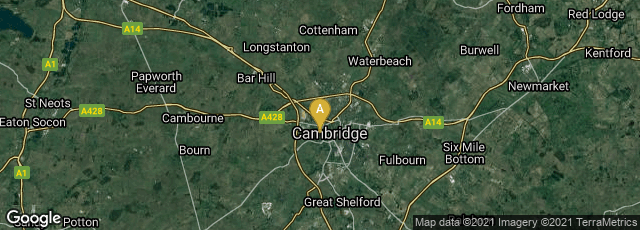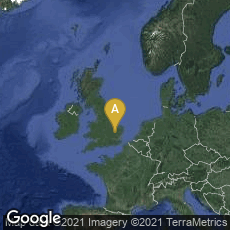

A: Cambridge, England, United Kingdom
In 1870 librarian and bibliographer of Cambridge University Henry Bradshaw issued A Classified Index of the Fifteenth Century Books in the Collection of the Late M. J. de Meyer. This 28-page pamphlet published in London represented the beginning of modern bibliographical analysis.
“In April 1870 Henry Bradshaw, librarian of Cambridge University, published a little pamphlet entitled A Classified Index of the Fifteenth Century Books in the Collection of the Late M. J. de Meyer, Which Were Sold at Ghent in November 1869. Despite the unpromising title, it deserves to be considered a landmark in intellectual history—indeed, as far as bibliographical scholarship is concerned, one of the greatest of landmarks—for it contains a passage of major significance emphasizing the importance of systematically examining the physical evidence in printed books. Bradshaw insisted that arranging early books according to the locations and presses where they were printed was the only method whereby knowledge of early printing would be advanced, since it provides a basis for dating or identifying the printers of books that do not readily proclaim their origins:
'we desire that the types and habits of each printer should be made a special subject of study, and those points brought forward which show changes of advance from year to year, or, where practicable, from month to month. When this is done, we have to say of any dateless or falsely dated book that it contains such and such characteristics, and we therefore place it at such a point of time, the time we name being merely another expression for the characteristics we notice in the book. In fact each press must be looked upon as a genus, and each book as a species, and our business is to trace the more or less close connexion of the different members of the family according to the characters which they present to our observation. The study of palaeotypography has been hitherto mainly such a dilettante matter, that people have shrunk from going into such details, though when once studied as a branch of natural history, it is as fruitful in interesting results as most subjects' (Bradshaw 15-16).
"This passage gains its landmark status by being the first published rationale of bibliographical methodology, explicitly envisioning a whole field of endeavor, from the person who was more responsible than any other for setting in motion what Stanley Morison called the ‘bibliographical revolution’ ” (Tanselle, Bibliographical Analysis: A Historical Introduction [2009] 6-7).